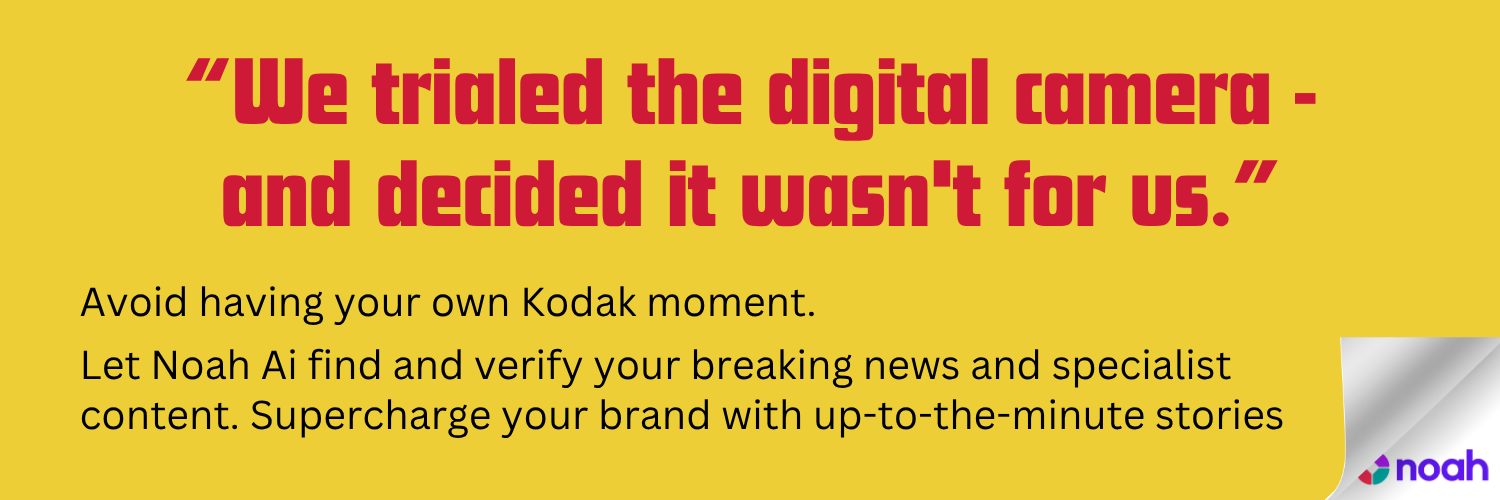The New York Times says its new generative AI tool, BrandMatch, is leading to increased click-through rates on campaigns.
The New York Times (NYT) has announced an ambitious investment in generative artificial intelligence as part of a broader strategy to enhance its self-reliance amid widespread external disruptions. With increasing constraints imposed by privacy laws, browser tracking restrictions and the diminishing efficacy of third-party signals, publishers like the NYT are compelled to innovate in order to sustain their advertising revenues.
Valerio Poce, Executive Director of Ad Product Marketing for New York Times Advertising, highlighted the pressing need for new methodologies in the face of these challenges in an interview with AdExchanger. “Tracking people as they move across websites is disappearing, pushing us to seek alternative solutions,” said Poce. A significant step in this endeavour includes the implementation of BrandMatch, a cutting-edge, generative AI contextual targeting tool officially introduced during the summer after a successful beta phase.
BrandMatch is designed to delve deeper into NYT’s vast content repository to identify and create bespoke audience segments. The tool uses a large language model to interpret customer personas tailored to specific advertising campaigns, going far beyond traditional demographic and psychographic metrics.
Poce expanded on the process, using a hypothetical example: “If a finance brand is promoting a family-planning product, it’s logical to target those interested in personal finance. However, BrandMatch can also identify relevant content like travelling with kids or home-buying, expanding the campaign’s reach to new customer segments.”
BrandMatch’s ability to produce campaign-specific audience segments means they are non-transferable between brands, even within similar sectors, as each brand’s identity and target audience can vary significantly.
A pivotal element in NYT’s digital advertising strategy is integrating first-party data with contextual tools like BrandMatch. This integration is critical for creating a compound effect on advertising performance, thereby expanding a campaign’s reach.
When queried about the specifics of the AI tools in use, Poce demurred on the technical aspects but emphasised NYT’s commitment to employing a flexible system. It blends third-party solutions with robust first-party data, underlining NYT’s strategic focus on privacy-compliant data strategies.
Poce said the tool had led to an average 30% increase in click-through rates (CTR) when BrandMatch is used in conjunction with NYT’s interactive display units, with some campaigns achieving a CTR of 0.8%. While acknowledging the limitations of CTR as a solitary metric, Poce pointed out their broader strategy includes assessing factors like brand lift and attention.
NYT is also exploring cross-portfolio media plans, linking different parts of its content ecosystem – such as news and games – to boost engagement. Such integration has demonstrated that campaigns spanning multiple content formats achieve significantly higher intent to action metrics than standard campaigns.
Reflecting on the challenges smaller publishers face, Poce advised investing in robust first-party data systems to better understand and monetise audience interactions. Establishing a deeper, value-driven relationship with readers not only builds a loyal subscriber base but also positions such publishers favourably in the eyes of advertisers. Although building such infrastructure demands substantial effort and investment, Poce urged smaller publishers to pursue these opportunities for sustainability and profitability.
Source: Noah Wire Services
- https://www.adexchanger.com/publishers/how-gen-ai-is-helping-the-new-york-times-control-its-own-destiny/ – Corroborates the New York Times’ investment in generative AI, the challenges posed by privacy laws and browser tracking restrictions, and the implementation of BrandMatch.
- https://www.adexchanger.com/publishers/how-gen-ai-is-helping-the-new-york-times-control-its-own-destiny/ – Details Valerio Poce’s comments on the need for new methodologies due to disappearing third-party signals and the introduction of BrandMatch.
- https://www.adexchanger.com/publishers/how-gen-ai-is-helping-the-new-york-times-control-its-own-destiny/ – Explains how BrandMatch uses a large language model to create bespoke audience segments and its ability to identify relevant content beyond traditional metrics.
- https://www.adexchanger.com/publishers/how-gen-ai-is-helping-the-new-york-times-control-its-own-destiny/ – Discusses the integration of first-party data with contextual tools like BrandMatch and its impact on advertising performance.
- https://www.adexchanger.com/publishers/how-gen-ai-is-helping-the-new-york-times-control-its-own-destiny/ – Provides details on the flexible system combining third-party solutions with first-party data and the emphasis on privacy-compliant data strategies.
- https://www.adexchanger.com/publishers/how-gen-ai-is-helping-the-new-york-times-control-its-own-destiny/ – Mentions the increase in click-through rates (CTR) when using BrandMatch with NYT’s interactive display units and the broader strategy of assessing brand lift and attention.
- https://www.adexchanger.com/publishers/how-gen-ai-is-helping-the-new-york-times-control-its-own-destiny/ – Describes the cross-portfolio media plans linking different content formats to boost engagement and the higher intent to action metrics achieved.
- https://www.adexchanger.com/publishers/how-gen-ai-is-helping-the-new-york-times-control-its-own-destiny/ – Advises smaller publishers on investing in robust first-party data systems to better understand and monetise audience interactions.
- https://techcrunch.com/2024/10/15/new-york-times-sends-perplexity-cease-and-desist-letter-demands-it-stops-using-its-content-in-ai-summaries/ – Corroborates the New York Times’ proactive stance in safeguarding its intellectual property, including legal actions against entities like OpenAI and Microsoft.
- https://techcrunch.com/2024/10/15/new-york-times-sends-perplexity-cease-and-desist-letter-demands-it-stops-using-its-content-in-ai-summaries/ – Details the New York Times’ lawsuit against OpenAI for using content without consent to train ChatGPT, highlighting the broader context of copyright issues.
- https://www.adexchanger.com/publishers/how-gen-ai-is-helping-the-new-york-times-control-its-own-destiny/ – Summarizes the New York Times’ strategic use of AI as a blueprint for leveraging technology to drive innovation and revenue in modern publishing.








